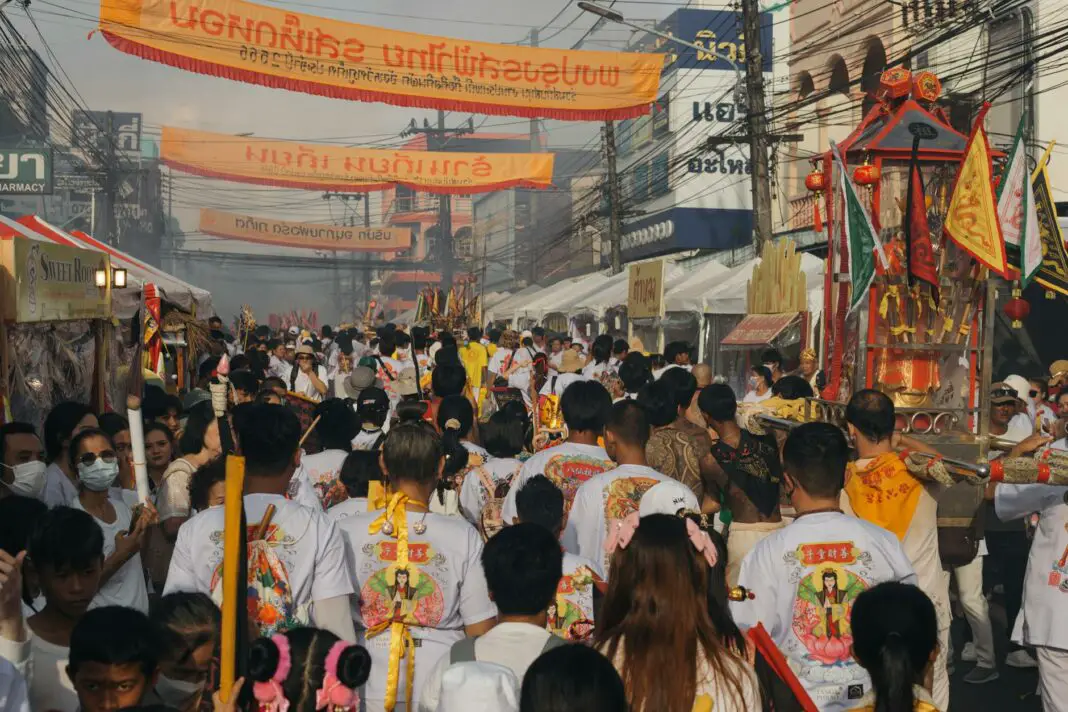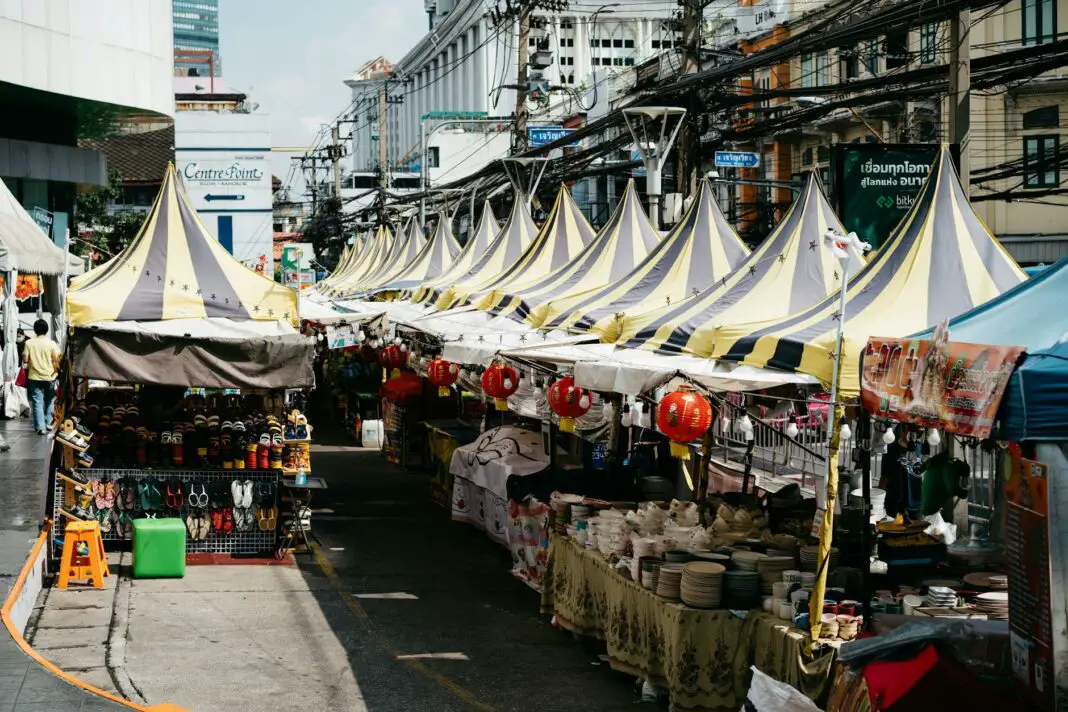Embarking on a trip to Thailand is not merely about sun-soaked beaches or breathtaking architecture; it transcends into a vibrant tapestry of culture, art, and history. Among its many captivating aspects, the enchanting world of Thai dance and its stunning costumes stand out as a quintessential part of the Thai heritage. This blog post delves into the fascinating journey of discovering which Thai dance costumes will leave you speechless. As you explore this vibrant aspect of Thai culture, you’ll uncover not just the visual surrealism of these garments but also their significance, which effectively reflects the heart and soul of Thailand.
Whether you are a travel enthusiast looking to immerse yourself in Thai culture or a fashion aficionado curious about the intricate details of traditional costumes, you are in for an insightful treat. This comprehensive guide takes you through various Thai dance costumes that can significantly elevate your Thailand experience. Get ready to be inspired as we unravel the spectacular artistry and symbolism behind these breathtaking outfits.
Table of Contents
- Historical Significance of Thai Dance Costumes
- Types of Thai Dance and Their Costumes
- Materials and Techniques Used in Thai Costumes
- Notable Thai Dance Costumes
- Where to Witness Thai Dance Performances
- Experiencing Thai Culture Beyond Dance
Historical Significance of Thai Dance Costumes
Understanding the historical significance of Thai dance costumes is imperative in appreciating their intricate beauty. These costumes are not merely outfits; they embody centuries of tradition and cultural evolution. Thai dance has roots in religious and royal ceremonies, where storytelling and movements convey age-old legends. Dancers donning elaborate costumes symbolize various characters from these stories, whether angels, deities, or mythical creatures. Each element, from the color of the fabric to the headgear, is meticulously chosen to reflect the narrative, making these costumes vital storytelling mediums.
Moreover, wearing such attire fosters a deep connection to Thai history, as each generation has adopted, adapted, and preserved this artistry. Engaging in this dance form through costumes allows performers to express their reverence for their ancestors while showcasing Thailand’s rich history to the world. As you explore these costumes, remember, they serve as living archives that tell a tale of a nation steeped in art, spirituality, and resilience.
Types of Thai Dance and Their Costumes
Diving into the realm of Thai dance reveals an array of styles, each uniquely adorned with corresponding costumes that highlight the performers’ grace and the stories they tell. Traditional forms include Khon, a masked dance depicting the epic Ramayana; Likay, a folk performance that captures the essence of daily life; and Fawn Leb, a graceful court dance characterized by serene movements and elaborate costumes. Each dance form requires specific attire that complements the choreography and character portrayal. For instance, the ornate headpieces and bright silks worn in Khon are designed to enhance the drama of the narrative, captivating audiences with stunning visuals and intricacies.
Fawn Leb, with its fluid movements, showcases a more subdued palette, focusing on elegance and subtlety. These costumes often feature delicate embroidery and jingle bells that create a melodious effect as the dancers move, enchanting spectators even more. As you delve deeper into the distinct types of dance, you’ll unravel how each performance interweaves music, storytelling, and costume, crafting a holistic experience that leaves an indelible mark in the hearts of all who witness it.
Materials and Techniques Used in Thai Costumes
The intricacy of Thai dance costumes is not solely attributed to their designs but also the materials and techniques employed in their creation. Traditionally, these costumes are composed of luxuriously vibrant silks blended with various other textiles, accentuating their fluidity and luminosity on stage. Thai silk, renowned for its rich colors and distinctive patterns, plays an integral role in costume design, providing an exquisite aesthetic that enhances the performer’s grace.
Additionally, the craftsmanship involved in creating each costume is remarkable. Artisans often utilize time-honored techniques like hand-weaving and intricate embroidery, which require immense skill and dedication. The attention to detail extends to the accessories as well, with meticulously crafted jewelry that complements the overall look. This thoughtful combination of materials and techniques results in costumes that are not just visually stunning but also rich in cultural heritage, making every performance a feast for the senses.
Notable Thai Dance Costumes
<p Within the realm of Thai dance costumes, certain pieces stand out due to their historical and cultural significance. The Chakkri Costume, traditionally worn in Khon performances, is adorned with gold and intricate bead details, making it one of the most recognizable ensembles in Thai dance. Its regal presence not only commands attention but also encapsulates the grandeur of traditional Thai mythology.
Another iconic piece is the Aspara Costume, which reflects the celestial beings and is often depicted in classical dances. Its flowing silks and embellishments create an ethereal look that transports viewers into the mystical realm of Thai spirituality. Not only do these costumes leave you awe-inspired, but they also act as a bridge to a rich cultural heritage that honors the artistry of their creators and the stories they tell.
Where to Witness Thai Dance Performances
Experiencing Thai dance in its authentic setting is a must for anyone visiting Thailand. The capital, Bangkok, hosts several meticulously choreographed performances at venues like the Thailand Cultural Centre, showcasing everything from classical to contemporary dance forms. These performances often include elaborate productions with grand sets, providing a holistic experience that visually and emotionally connects the audience to the art form.
For a more traditional experience, consider attending a performance in the historic city of Ayutthaya or at local temples, where dance and ritual intersect, steeping you in the local culture. Such interactions make witnessing Thai dance performances a magical experience that becomes engrained in your memory, serving to deepen your understanding of this rich cultural heritage.
Experiencing Thai Culture Beyond Dance
Engaging with Thai culture extends far beyond just watching dance; it’s about immersing yourself in the entire experience of the land. Participating in local festivals, such as Songkran or Loy Krathong, allows you to see traditional costumes up close while enjoying unique festivities. These celebrations often feature various performances, showcasing the richness of Thai heritage while encouraging audience participation. The vibrant colors, sounds, and feelings of connection exemplify the essence of community in Thailand.
Furthermore, delve into cooking classes and art workshops that allow you to engage with local artisans, enhancing your understanding of Thai traditions while gaining hands-on experience. Exploring these varied avenues provides a multidimensional approach to understanding Thailand, enriching your visit and creating lasting memories that resonate long after your trip has ended.
Embrace the Spirit of Thailand
In conclusion, a trip to Thailand promises a journey filled with wonder, and the enchanting world of Thai dance costumes undeniably amplifies this experience. By delving into the artistry, materials, and performances associated with these costumes, you not only enrich your understanding of Thai culture but also leave with cherished memories of the vibrancy and depth of Thailand’s heritage. Be it through attending performances or engaging with locals, let the spirit of Thailand captivate you in a way that inspires and enriches your life.
FAQ
- What is the significance of Thai dance costumes? Thai dance costumes are extraordinarily significant as they reflect centuries of Thai culture, mythology, and history, showcasing the artistry and craftsmanship inherent in Thai heritage.
- Where can I see traditional Thai dance performances? Traditional Thai dance performances can be seen in major cities such as Bangkok and Ayutthaya, including cultural centers and during local festivals, offering immersive cultural experiences.
- What materials are used in Thai dance costumes? Thai dance costumes are typically made from vibrant silks and other textiles, complemented by intricate hand embroidery and artisanal craftsmanship that emphasizes their visual appeal.
- How can I engage with Thai culture beyond dance? Engaging with Thai culture can be done by participating in local festivals, attending cooking classes, and exploring art workshops that highlight traditional practices and community involvement.
Image Credit: Pexels





